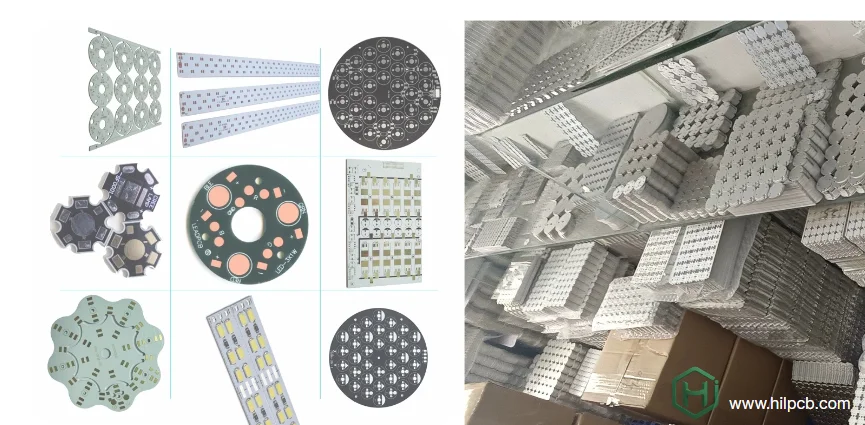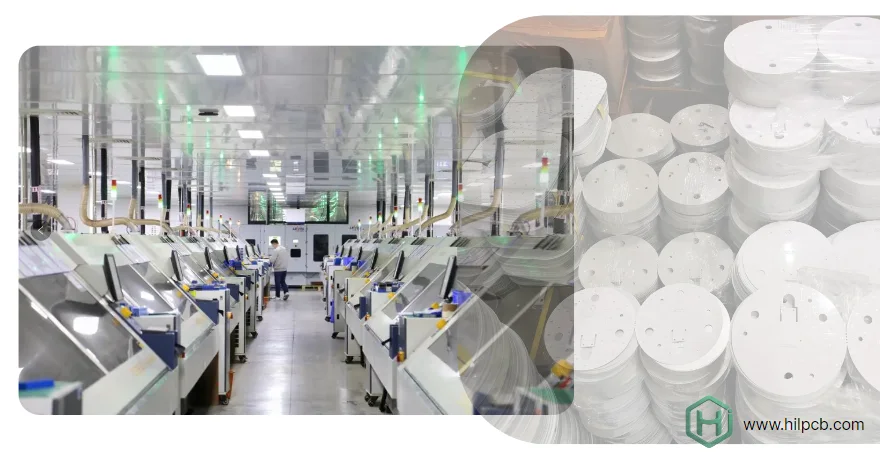Behind every high-performance electronic product lies a factory capable of precision, consistency, and innovation. Choosing the right aluminum PCB factory isn’t just about finding a supplier — it’s about understanding the engineering ecosystem that ensures reliability from prototype to mass production.
This article takes you inside the operational layers of a professional factory, helping you evaluate not just “what” it produces, but how and why it delivers superior results.
1. The Hidden Structure of a Reliable Aluminum PCB Factory
Every high-end factory operates as a system, not just a collection of machines. While most buyers focus on visible equipment, the real difference lies in process architecture — the seamless coordination between design input, material flow, and feedback control.
Key structural indicators include:
- Layered Production Control – Factories should use integrated ERP + MES systems to synchronize design, scheduling, and inspection data.
- Vertical Process Integration – From raw aluminum cutting to final assembly, fewer outsourced steps mean higher consistency.
- Engineering Feedback Loop – Data from electrical and thermal testing should directly influence process adjustments and material selection.
- Preventive Maintenance Programs – Machine uptime above 98% signals stable output and disciplined operations.
Factories lacking digital coordination often struggle with yield drift, slow design iteration, and inconsistent quality across batches.
2. Evaluating Technical Infrastructure and Equipment Depth
Modern metal-core PCB fabrication demands precision and temperature control far beyond FR4 processes. When visiting or auditing a factory, pay attention to equipment generation, redundancy, and process capability.
What to Examine:
- CNC drilling systems with sub-20μm accuracy.
- Automated optical inspection (AOI) and X-ray alignment for multi-layer verification.
- Controlled lamination for high-thermal PCBs with stable dielectric thickness.
- Advanced plating and surface treatment facilities with traceable chemistry control.
High-performing factories continuously reinvest in next-gen machinery, aligning with smart manufacturing trends such as real-time SPC and IoT-enabled production monitoring.
3. From Machines to Methods: Process Control and Quality Logic
Equipment alone doesn’t ensure excellence — it’s the quality logic embedded within factory operations that defines long-term reliability. A disciplined aluminum PCB factory establishes quality as a closed-loop management system rather than a series of inspections.
Core quality practices include:
- Statistical Process Control (SPC) with live dashboards monitoring temperature, pressure, and etch depth.
- First Article Validation before volume runs, verifying design conformance and layer registration.
- Calibration Matrix ensuring all measuring tools remain traceable to global standards.
- Root Cause Resolution – Corrective actions tracked to closure with data-based verification.
Factories with ISO 9001 and IATF 16949 certification demonstrate compliance — but the best ones go further, embedding Six Sigma and continuous improvement culture across teams.

4. Engineering Collaboration: The Factory’s Soft Power
A truly capable aluminum PCB factory doesn’t just execute drawings — it collaborates with engineers to make designs more manufacturable and thermally efficient.
Strong engineering departments provide:
- DFM & DFA optimization suggestions that reduce rework.
- Thermal simulation guidance for LED and power modules.
- Material compatibility analysis for heavy copper PCBs and HDI PCBs.
- Design rule support and documentation libraries tailored to process limitations.
This level of technical partnership shortens design cycles and ensures manufacturability from day one — a major advantage for startups and global OEMs alike.
5. Quality Culture and Workforce Discipline
No matter how automated a plant becomes, human expertise remains the backbone of precision manufacturing. Evaluate whether the factory has:
- Structured training and certification programs for operators.
- Cross-department quality meetings for real-time issue escalation.
- Low employee turnover, indicating stable process ownership.
- Clear visual management systems promoting accountability.
Factories with strong quality culture maintain process consistency even under high demand or staff expansion phases.
6. Smart Manufacturing and Digital Transformation
Leading aluminum PCB factories are shifting from traditional automation to data-driven manufacturing ecosystems.
Examples of smart integration include:
- IoT Sensors monitoring process stability across plating, drilling, and lamination lines.
- Automated Material Traceability connecting supplier batches to production outcomes.
- Predictive Maintenance algorithms reducing downtime.
- Real-time MES Dashboards accessible to customers for transparency.
Digital transformation not only enhances speed and reliability — it builds trust by giving customers visibility into the production floor.
7. Assessing Long-Term Reliability and Supply Chain Strength
When choosing a manufacturing partner, think beyond today’s order.
A dependable aluminum PCB factory should prove its ability to scale, sustain, and adapt in changing market conditions.
Look for:
- Multi-industry customer portfolios to balance demand cycles.
- Proven export logistics and environmental compliance (RoHS, REACH).
- Financial stability ensuring uninterrupted operations.
- In-house assembly services such as turnkey assembly or box-build assembly for vertical integration.
A factory that manages both technology and resilience offers not just manufacturing — but strategic partnership.
8. The Future of Aluminum PCB Factories
The next generation of aluminum PCB factories will merge automation, AI, and sustainability into one integrated ecosystem. Expect to see:
- AI-based optical inspection that identifies early defect patterns.
- Energy-efficient lamination systems reducing thermal waste.
- Closed-loop material recycling for eco-friendly production.
- Digital twins simulating production before physical setup.
These innovations define the new benchmark for competitiveness and environmental responsibility in PCB manufacturing.
Conclusion
Evaluating an aluminum PCB factory means understanding the entire production ecosystem — from machines and processes to people and culture. True capability lies in the integration of technology, management, and engineering collaboration that delivers consistent, scalable, and innovation-ready results.
Factories embracing smart manufacturing and continuous improvement are redefining what quality means in modern electronics. By partnering with such a facility, you gain more than a supplier — you gain a strategic ally in innovation and reliability.
HILPCB continues to pioneer this evolution, combining technical precision with digital transformation to deliver trusted aluminum PCB manufacturing worldwide.

